Bloomington eyes more housing in Hopewell project—but zoning code changes are needed to maximize potential
At the city planning commission’s November meeting, Bloomington mayor Kerry Thomson is hoping to have a significant zoning change in Hopewell South ready for review. The change would be needed in order to allow for the kind of denser development Thomson would like to see there.
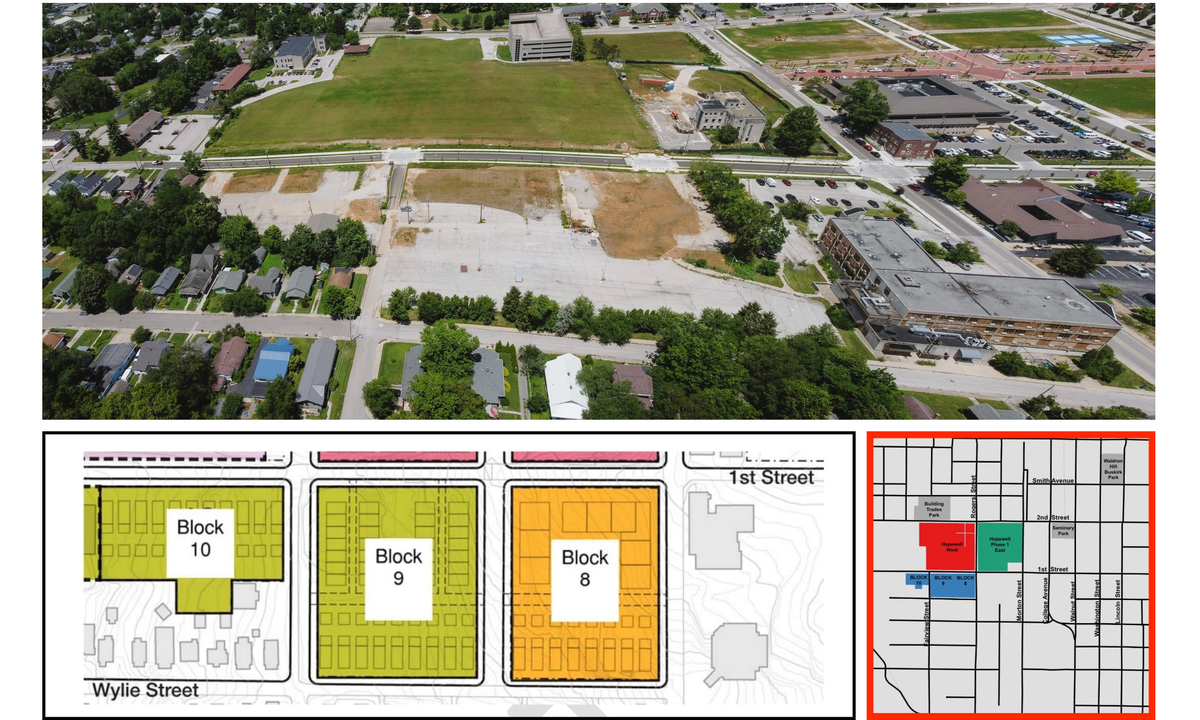
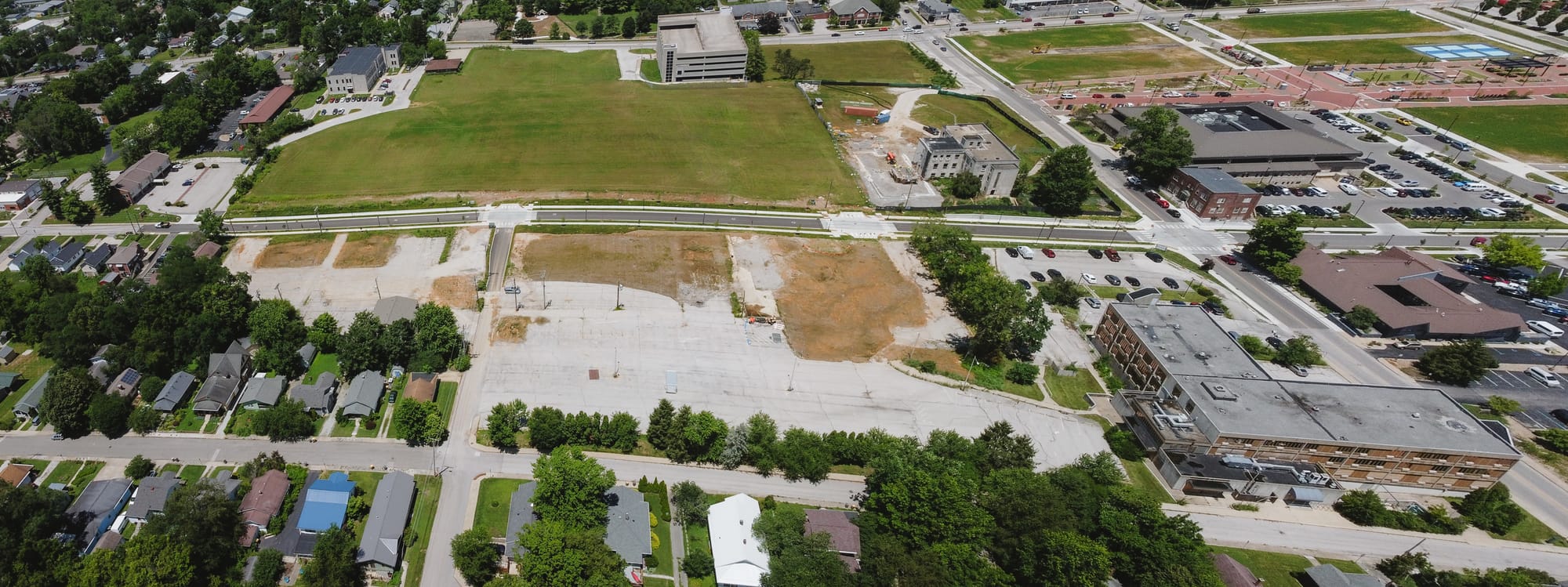
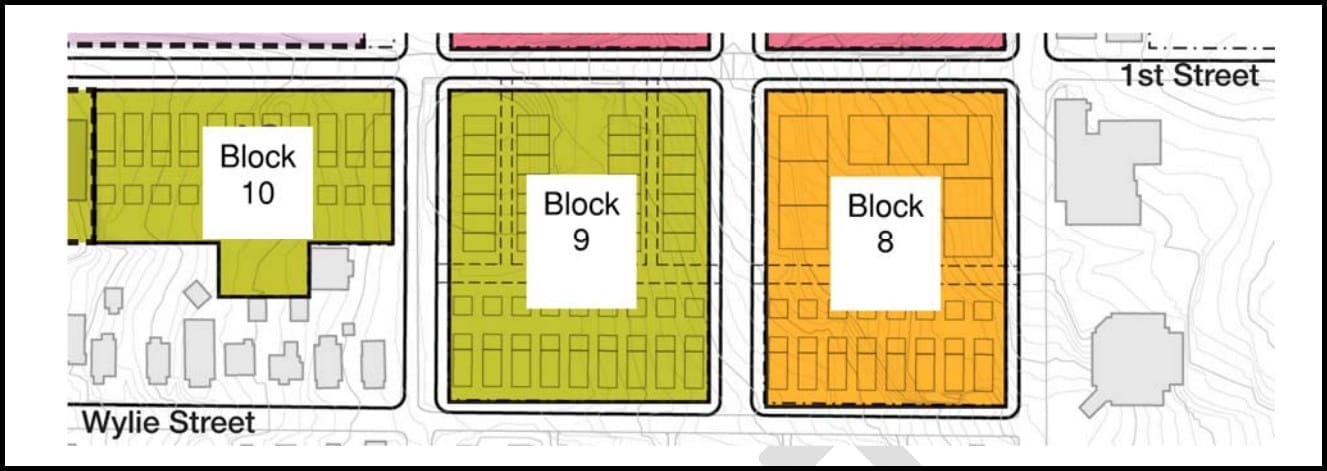
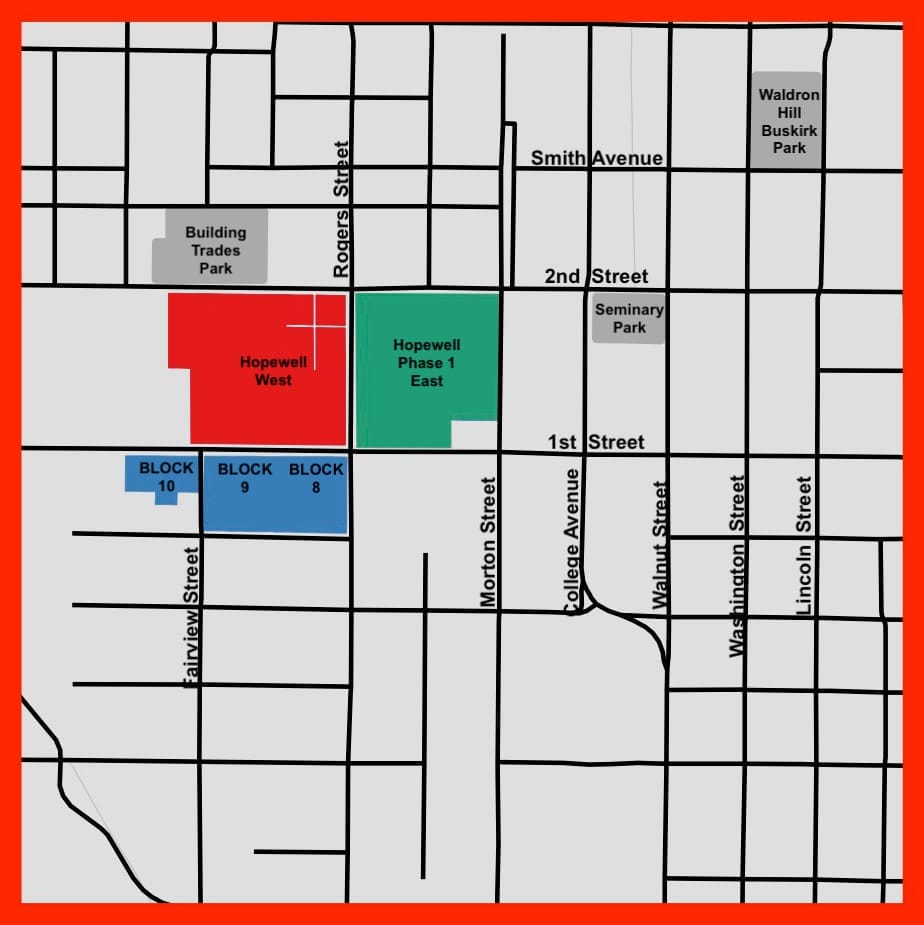
Left: Hopewell South blocks 10, 9, and 8 as shown in the master plan. Right: Vicinity map by The B Square showing the three phases of Hopewell.
At the city planning commission’s November meeting, Bloomington mayor Kerry Thomson’s administration is hoping to have a significant zoning change in Hopewell South ready for consideration.
Hopewell is the neighborhood that Bloomington is now trying to develop in and around the former location of the IU Health hospital at 2nd and Rogers Streets. The city’s redevelopment commission (RDC) purchased the property from the health care provider in a $6.5-million real estate deal.
The need for a zoning change is a big takeaway from an event held on Monday afternoon in city council chambers to kickoff a development initiative for Hopewell South. The change in zoning will be presented as a PUD (planned unit development) which is a kind of customized zoning for a particular area.
The PUD would be needed in order to allow for the kind of denser development of single family and townhomes that the administration would like to see in Hopewell South, which is Blocks 9 and 10 in the Hopewell numbering scheme. Both blocks are south of 1st Street.
Not included in the current development effort for Hopewell South is Block 8, which includes the former Bloomington Convalescent Center building at 714 S. Rogers. Thomson is eying the building as a rehab-reuse project to house Bloomington’s police department.
The kind of single-family block layouts that the Thomson administration wants to make possible were sketched out for the audience of real estate professionals, builders and bankers on Monday by Flintlock LAB’s Alli Thurmond Quinlan. Attendees numbered around 50 people.
Flintlock LAB has been contracted in part to develop pre-approved designs for houses, as part of the Thomson’s administration’s change in strategy, after asking Bloomington’s redevelopment commission (RDC) in late June to reject a second round of proposals that had been submitted for Hopewell South.
Quinlan told the audience that without any zoning changes, the current “by-right” scenario would be just 28 homes for Blocks 9 and 10 of Hopewell South. But she described a more ambitious scenario that would quadruple that number, yielding as many as 118 homes.
Key to the 118-home scenario would be zoning changes proposed as part of the PUD, such as legalizing alley frontage, maximizing lot splits, and permitting small-lot development.
The idea is to use Hopewell South as a test case, to see how well development goes in those two Blocks, and then look to the other parts of Hopewell and the rest of the city to see how the lessons might apply there.
Quinlan used an area near Rose Hill Cemetery to illustrate some of the concepts, because lots there are extra deep. In an area with such deep lots, allowing for construction of houses where there is only alley access, and allowing splits down to smaller lot sizes, could allow for infill development in a place that looks from the street as if it is already filled in, Quinlan said.
In her introductory remarks, Thomson said that the rest of the city could be considered through the “Hopewell lens” and the new neighborhood could make a test case for “building more inclusively in a set of new standards for Bloomington.” Thomson added, “It’s my commitment during this term that we will get to a more streamlined permitting process, and we will have a predictable planning process, so people know what they’re getting into when they decide to build in Bloomington.”
The timeline presented by Quinlan includes focused planning during September and October, with October dedicated to developing a catalog of pre-approved plans and construction documents for review by Bloomington’s redevelopment commission.
At the start of 2026, developer and lender engagement is planned, including a recruitment event in February. April will feature a workshop aimed at small developers. In May, the program’s development is expected to include the creation of a developer request for proposals (RFP), an affordability framework, website development, and further development of program and licensing details, all to be provided to the Bloomington RDC for review that same month. The program’s official launch, which is a four-week developer boot camp, is slated for June 2026.
If Thomson’s administration hits the target of the plan commission’s November meeting for introduction of the proposed Hopewell South PUD, that would mean details will be available for the meeting on Nov. 10.

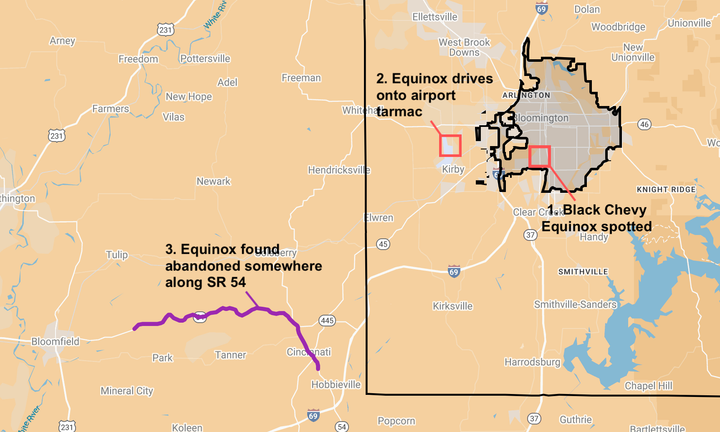


Comments ()